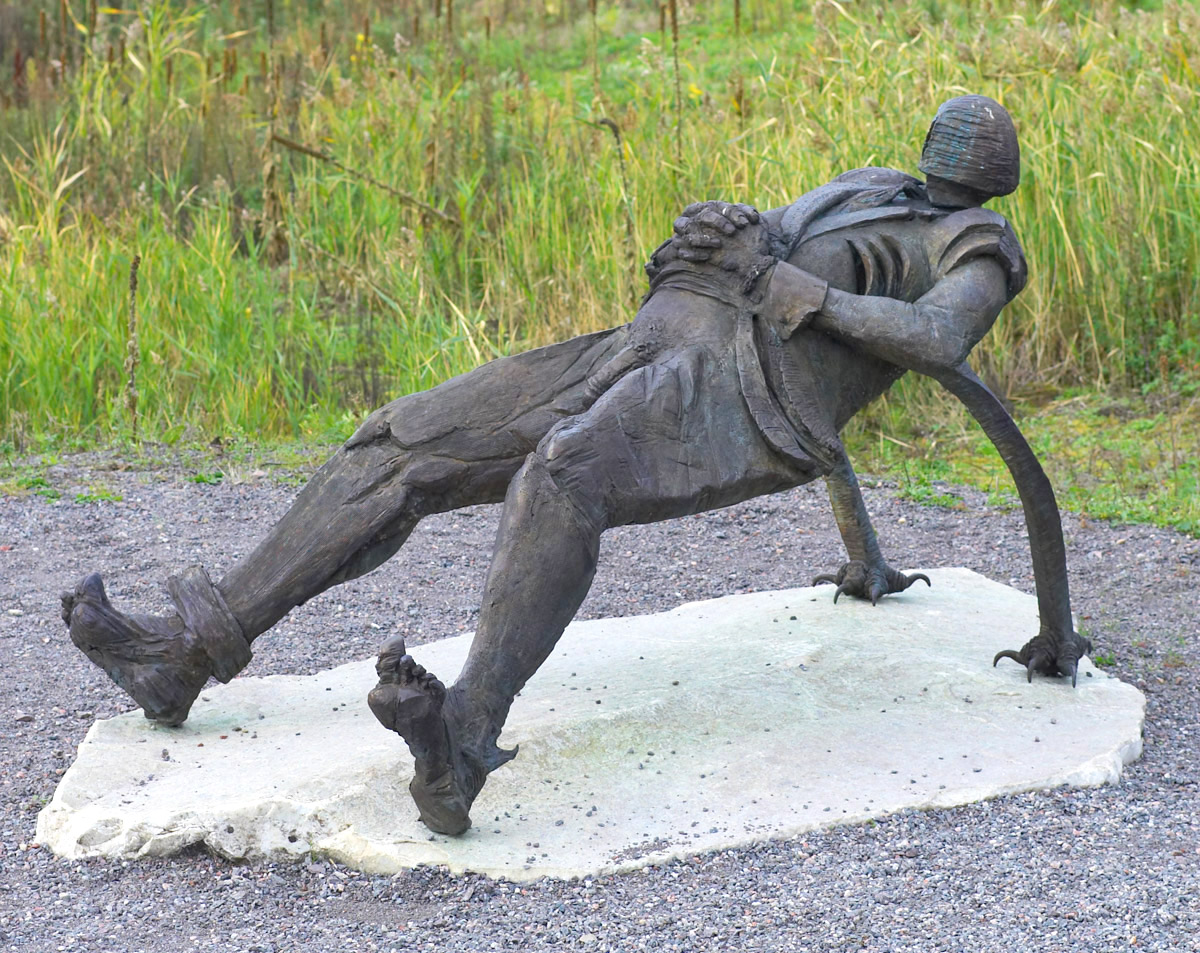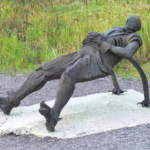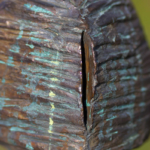
Power, bronze, 125 x 140 x 230 cm. 1998.
“Power” on the Mount of Art
Power, or the ability to rule over people. The word itself often evokes feelings of unpleasantness. For people who have lived under dictatorships the word power is associated with violence and oppression. For others power might mean something legitimate, an attitude that we are obliged to adjust to whether we like it or not.
How Does One Describe Power?
Richard Brixels sculpture “Power” can be found at the unique exhibition “Art on Mount” on Mount Kvarntorp near Kumla. Power is cast as a man, which is usually the case in real life as well, albeit there are some women who also possess power. At a quick glance, one might find the sculpture “Power” provocative and difficult to interpret. He is a man in a suit with a disproportionately small head, protected by a helmet and a visor, with his hands clasped over his big stomach and with his genitals exposed. Is this power? It certainly is, if we stop to think.
– Men exert power. Power is often invisible, with no recognizable features. It sits heavy and solid and cannot be moved. As a result “Power” stays put and does not waft away like many of my other sculptures. Power is clasping his hands over his stomach, which is a satisfied and unyielding sign of victory. But why exposed genitals?
– Power is often gendered, regardless of whether it concerns a man or a woman. Power exerts an incredibly strong sexual attraction. People with power are attractive regardless of their other qualities.
IIf you study the sculpture closely you will find many other signs of power. On his arm there is a watch with a ten-hour dial. The man is equipped with gills, found on both sharks and sports cars two phenomena that radiate strength and aggression. On one foot he wears a boot with a spur. The other foot is naked. The arms, which could be interpreted as hind legs, end in eagle claws.
– A man of power is not ruled by time. He is the ruler of time. With the help of his spur he goads those around him into action. Richard Brixel says that the naked foot tells us that in spite of all, we are equal. He was conscious of the fact that the sculpture would arouse strong feelings and might be seen as controversial.
– I was not the only one to have misgivings. I felt that this was testing the borders of what can be shown. But I do not think that “Power” is vulgar. Not in the least. I was, however, unsure of how women would respond and very apprehensive about the first reactions. Some people have certainly made acid comments, but according to the guides on Mount Kvarntorp “Power” is one of the most appreciated sculptures, especially among women. Some women even ask their men to take photographs of them beside “Power”. Could it perhaps be that “Power”, even as a sculpture has sexual attraction?








